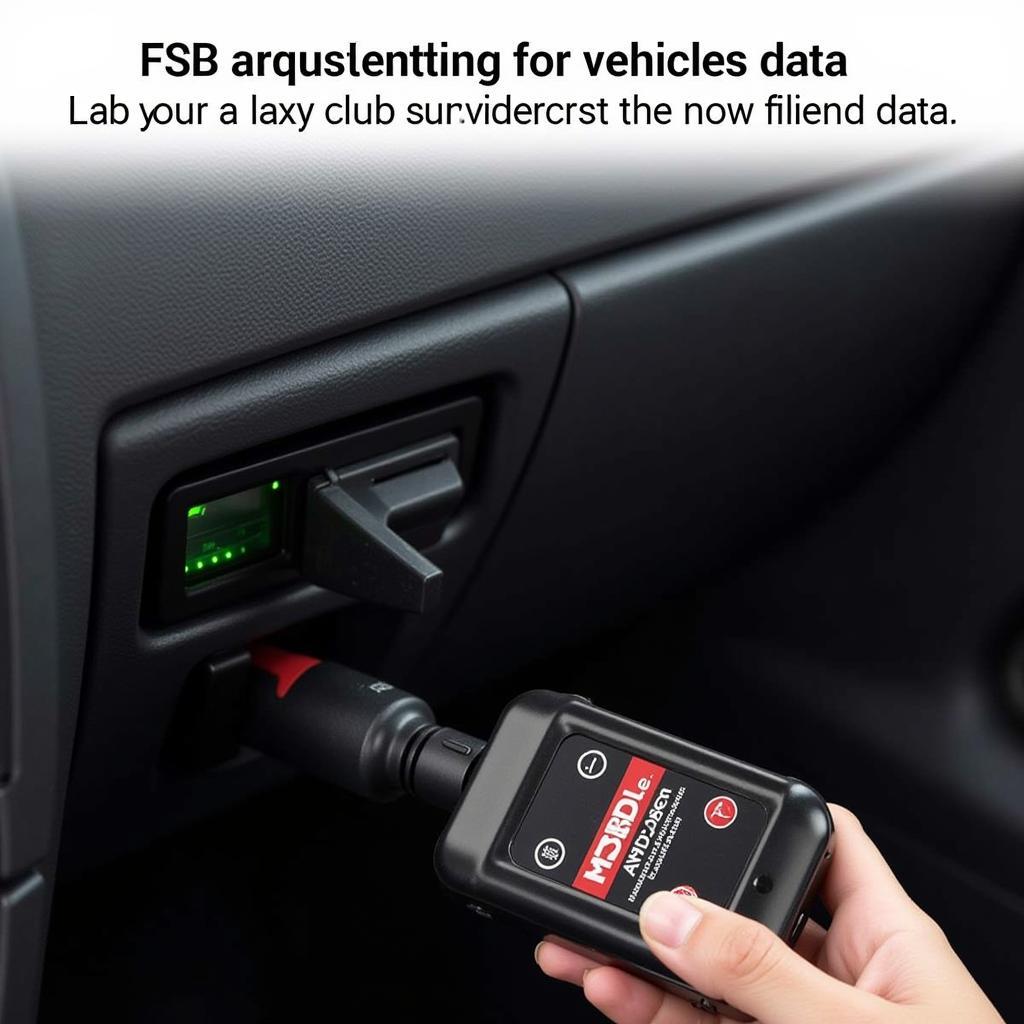Your cart is currently empty!

Understanding Torque OBD2 G Sensors: What They Are and How They Work
Torque Obd2 G Sensors are a powerful tool for understanding your vehicle’s performance and handling. They provide valuable data on acceleration, braking, and cornering forces, allowing you to monitor and analyze your driving habits. Whether you’re a seasoned mechanic or a car enthusiast looking to delve deeper into vehicle diagnostics, understanding how these sensors work can provide insightful information.
How Torque OBD2 G Sensors Work
G sensors, also known as accelerometers, measure the force of gravity acting upon them. In the context of an OBD2 scanner and an app like Torque Pro, these sensors measure the vehicle’s acceleration in three axes: longitudinal, lateral, and vertical.
- Longitudinal acceleration measures the force exerted when accelerating or braking.
- Lateral acceleration measures the force experienced during cornering, indicating how hard the vehicle leans into a turn.
- Vertical acceleration measures the force exerted upwards or downwards, such as when driving over bumps or dips in the road.
These sensors work by detecting changes in capacitance caused by movement. Inside the sensor, tiny micro-electromechanical systems (MEMS) contain microscopic structures that move in response to acceleration. This movement alters the capacitance, which is then converted into an electrical signal. The OBD2 scanner reads this signal and displays it within the Torque app, allowing you to visualize the data in real-time or analyze it later.
 Torque Pro App Displaying G-Force Data
Torque Pro App Displaying G-Force Data
Benefits of Using Torque OBD2 G Sensors
Utilizing the data from these sensors offers several benefits for understanding and improving your driving experience:
- Performance Monitoring: G-force readings provide insights into your vehicle’s acceleration and braking capabilities. You can track your 0-60 mph times, braking distances, and analyze the consistency of your launches.
- Enhanced Driving Skills: By observing lateral G-forces, you can understand how your driving style affects the vehicle’s handling during cornering. This information can help you improve your cornering technique and maintain better control.
- Vehicle Diagnostics: Unusual G-sensor readings can sometimes point to underlying vehicle issues. For example, inconsistent braking force readings could indicate a problem with your brake system.
- Fun and Engaging Data: For car enthusiasts, G-force data adds another layer of engagement and feedback to the driving experience. It allows you to quantify and visualize the forces acting on your vehicle, making for interesting analysis after a spirited drive or track day.
Choosing the Right OBD2 Scanner and App
To utilize G-sensor data, you’ll need a compatible OBD2 scanner and a mobile app like Torque Pro. Not all OBD2 scanners support G-sensor readings, so ensure you choose one that explicitly mentions this feature.
When selecting an app, look for options that offer clear and customizable data displays. Features like real-time graphing, data logging, and the ability to export data for further analysis are valuable additions.
Interpreting Torque OBD2 G Sensor Data
Interpreting the data from G sensors effectively requires understanding the context of your driving situation.
- High Longitudinal G-forces during acceleration indicate strong engine power and efficient power delivery. Conversely, high G-forces during braking show effective braking performance.
- High Lateral G-forces suggest the vehicle is experiencing significant cornering forces. While some lateral G-force is necessary for turning, excessively high values might indicate aggressive cornering or potential stability issues.
- Fluctuating or Inconsistent Readings could point to a problem with the sensor itself or other vehicle systems. For instance, erratic readings during braking might indicate uneven brake pad wear or a problem with the ABS system.
 OBD2 Scanner Plugged into a Vehicle’s OBD2 Port
OBD2 Scanner Plugged into a Vehicle’s OBD2 Port
Torque OBD2 G Sensors: A Valuable Tool for Car Enthusiasts
Torque OBD2 G sensors provide a wealth of information for understanding your vehicle’s performance and enhancing your driving skills. By monitoring acceleration, braking, and cornering forces, you can gain valuable insights into how your car behaves in various driving situations.
Remember, while G-sensor data offers valuable information, it’s essential to interpret it within the context of your driving environment and vehicle’s overall condition. If you experience any unusual readings or suspect a problem with your car, consulting a qualified mechanic is always recommended.

Leave a Reply